March 4, 2024
Elevate Your Website’s SEO Game with These Free Tools

In the dynamic world of digital marketing, staying ahead in the SEO game is crucial for anyone looking to enhance their online presence.
Fortunately, there are several free tools available that can significantly boost your website’s ranking on search engines like Google.
Here’s a rundown of some must-have SEO tools that can help you achieve that coveted #1 spot without breaking the bank.
1. Keyword Surfer Chrome Extension
Starting with keyword research, the Keyword Surfer Chrome extension is an invaluable tool.
It integrates seamlessly with your Google searches, providing instant insights into keyword ideas and their search volumes.
This extension not only reveals related keywords but also offers a glimpse into your competitors’ page metrics, such as estimated traffic volume, word count, and keyword usage.
2. Google Trends
Google Trends is another essential, offering a window into the latest keyword trends.
By setting your target region (e.g., the United States for a US-based audience), you can discover rising keywords within your niche.
Adjusting the timeframe to at least the past 12 months can reveal more sustained trends, along with related topics and queries to further refine your keyword strategy.
3. Exploding Topics
For those looking to tap into emerging trends, Exploding Topics is a goldmine.
This tool uncovers buzzing topics across various niches, making it easier to identify fresh content ideas that haven’t become overly competitive yet.
4. Blog Ideas Generator
When it comes to content creation, the Blog Ideas Generator by HubSpot is a game-changer.
Simply input your blog’s focus, and the tool generates a list of title ideas along with suggested SEO keywords.
It even allows you to generate more ideas based on your preferences and create blog post outlines and drafts, streamlining the writing process.
5. Surfer SEO’s Free Article Outline Generator
For crafting well-structured content, Surfer SEO’s Free Article Outline Generator is invaluable.
Input your topic, and it provides subheading suggestions based on competitor analysis and keyword research.
While AI tools like ChatGPT can assist in drafting articles, it’s crucial to add a human touch to align with Google’s content guidelines, emphasizing genuine human experiences.
6. Grammarly and Hemingway Editor
Ensuring your content is clear and error-free is vital for both user experience and SEO.
Tools like Grammarly and Hemingway Editor can help refine your writing, highlighting complex sentences and suggesting simpler alternatives to improve readability.
7. Google Search Console and Analytics
Tracking your website’s performance is key to understanding and improving your SEO efforts.
Google Search Console offers insights into your site’s keyword rankings and alerts for technical issues, while Google Analytics provides comprehensive data on website traffic and user behavior.
8. Ahrefs’ Free Keyword Rank Checker
To monitor how your content fares in search rankings, Ahrefs’ Free Keyword Rank Checker is a handy tool.
It shows where your articles rank for specific keywords, along with other valuable metrics like domain authority and backlink profiles.
9. Link Building Platforms
For enhancing your site’s authority through backlinks, platforms like Connectively (formerly HARO), PitchRate, and Help a B2B Writer can connect you with journalists and content creators.
These platforms facilitate organic link-building opportunities from high-authority sites, boosting your SEO without resorting to manipulative tactics.
By leveraging these free SEO tools, you can enhance your website’s visibility, attract more traffic, and climb the search engine rankings.
SEO is an ongoing process, so continuously refining your strategy and staying updated with the latest tools and trends is crucial for long-term success.
Unleashing Creativity with AI: The Power of Real-Time Trend Analysis
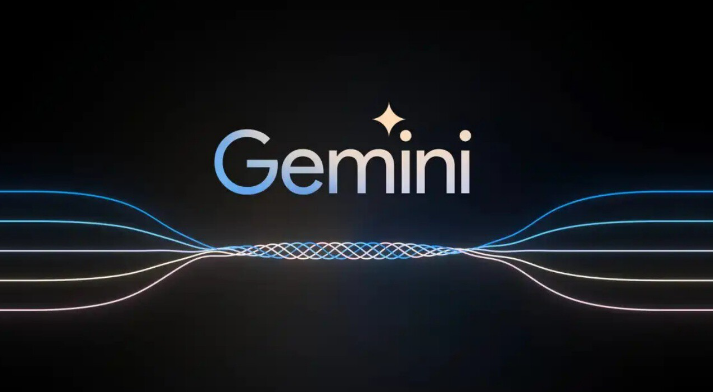
In the rapidly evolving world of print-on-demand businesses, staying ahead of the curve is crucial for success.
The introduction of advanced AI tools has revolutionized the way entrepreneurs approach trend analysis, making it faster, more accurate, and incredibly efficient.
One such groundbreaking tool is a product of Google’s innovative technology, designed to cater to the dynamic needs of creative businesses: Gemini.
This AI tool stands out for its ability to provide real-time access to trending data, a feature that sets it apart from other AI platforms.
Its integration with Google’s vast database allows it to offer up-to-the-minute trend insights, which is invaluable for businesses looking to capitalize on current market demands.
Whether you’re in the business of selling sweatshirts, t-shirts, mugs, or any other customizable product, this tool can tailor its search to fit your specific needs.
Imagine the convenience of typing in a simple prompt, such as requesting the top emerging keywords for sweatshirts in the current month, and receiving an instant list of trending terms.
This not only saves time but also ensures that your product designs are aligned with what customers are actively searching for.
From statement sweatshirts to oversized, cropped, hooded, fleece, vintage, graphic, color block, distressed, and sustainable options, the tool provides a diverse range of trends to explore.
Moreover, the AI’s ability to adapt to the temporal context of your queries adds another layer of precision to your research.
For instance, if you inquire about trends for a past month, the tool intelligently redirects you to the current month’s trends, ensuring that your business stays relevant and up-to-date.
This AI tool is more than just a trend analyzer; it’s a creative partner that empowers print-on-demand businesses to stay ahead in a competitive market.
By leveraging the power of real-time data and AI, entrepreneurs can unlock new levels of creativity and innovation in their product offerings.
The fusion of AI and real-time data analysis is transforming the landscape of print-on-demand businesses.
With tools like Google’s AI offering, the possibilities for creative expression and market success are boundless.
As we continue to embrace these technological advancements, the future of creative entrepreneurship looks brighter than ever.
March 11, 2024
Effortless Earnings: A Guide for the Ambitiously Lazy

With the right tools and platforms, you can start earning with minimal effort and no upfront costs.
Here’s how to tap into this opportunity with a simple, yet effective strategy:
Step 1: Harness the Power of AI Design Tools
The first step involves leveraging an AI-powered design tool like Ideogram.ai that enables you to create stunning images, logos, and designs with just a few clicks.
These platforms are incredibly user-friendly and require no prior design experience.
You simply input your requirements, and the AI generates professional-quality visuals in seconds.
The beauty of these tools is their cost-effectiveness, with many offering free versions that are more than sufficient for getting started.
Step 2: Dive into the World of Design Contests
Once you’ve got your AI design tool ready, the next step is to enter the lucrative world of design contests.
Websites like 99designs offer a platform where clients post design briefs for logos, images, and other creative content.
Designers then submit their creations, and the client picks a winner who receives the prize money.
These contests can range from $100 to $500 per win, making them an excellent source of income for minimal effort.
Step 3: Expand Your Horizons
Don’t limit yourself to just one platform. Explore websites like DesignCrowd, where similar opportunities abound.
These platforms host a wide variety of design contests, from business cards to web designs, offering even more chances to win.
The key is to participate in as many contests as possible to increase your odds of winning.
The AI design tool does the heavy lifting, so your time investment remains minimal.
Step 4: Optimize Your Strategy
To maximize your chances of success, focus on contests that are closing soon.
This reduces the waiting time to find out if you’ve won and allows you to move quickly to the next opportunity.
Keep an eye on the briefs and ensure your AI-generated designs meet the client’s requirements.
With each contest, you’ll refine your approach, becoming more efficient and effective at selecting and winning contests.
For the ambitiously lazy, this strategy offers a perfect blend of minimal effort and maximum reward.
By leveraging AI design tools and participating in online design contests, you can start generating income from the comfort of your home.
It’s a testament to the modern digital landscape, where innovation and convenience meet to provide real opportunities for passive income. So, why wait?
Dive in and start your journey towards effortless earnings today.
Unveiling Claude 3: The Pinnacle of AI Intelligence
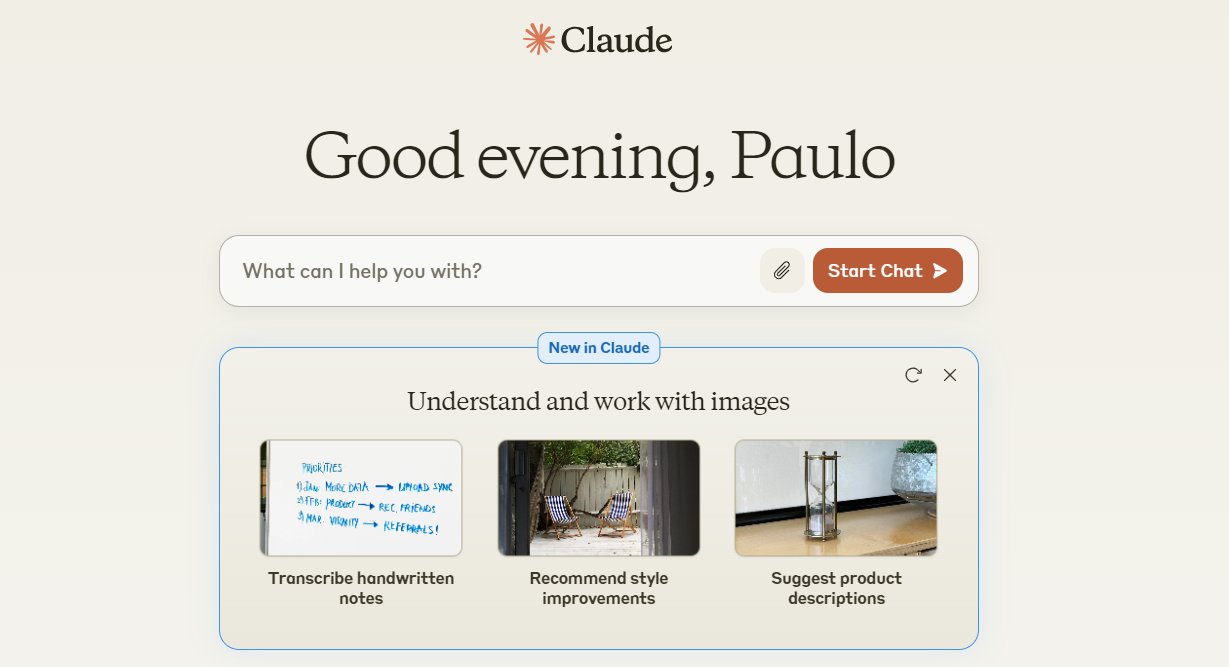
In the rapidly evolving landscape of artificial intelligence, a groundbreaking development has emerged, setting new benchmarks in the realm of AI capabilities.
The introduction of Claude 3 marks a significant milestone, offering a suite of models that redefine the standards of AI performance.
Claude 3, a family of three distinct models, has been unveiled, with the flagship model, Opus, hailed as the most intelligent AI model currently available.
This claim positions Opus not only as a successor to its predecessors but also as a formidable competitor to other leading models such as GPT-4.
The Claude 3 family comprises Haiku, Sonnet, and Opus, each designed to cater to varying levels of performance and cost requirements.
Opus, in particular, stands out for its unparalleled intelligence, surpassing its peers in most common AI evaluations, including the widely recognized MML metric.
This achievement suggests that Opus excels in areas such as comprehension, influence, and the execution of complex tasks, pushing the boundaries toward the realization of general AI.
One of the most compelling aspects of Claude 3 is its proficiency across a broad spectrum of tasks.
From code generation and analysis to engaging in conversations in languages beyond English, such as Spanish, Japanese, and French, Claude 3 demonstrates exceptional versatility.
Benchmark comparisons reveal that, even with the same level of initial examples provided to the model,
Opus outperforms GPT-4 and other contemporaries, showcasing its superior capabilities in various metrics, particularly in multilingual mathematics.
Beyond its raw intelligence, Claude 3 is designed for real-world applications, offering near-real-time performance for use cases such as customer service chats and data extraction.
The models are optimized for rapid response, with the smallest and fastest model, Haiku, capable of processing thousands of tokens, including images, in mere seconds.
This efficiency makes Claude 3 an attractive option for deployment in production environments.
A notable advancement in Claude 3 is its multimodal capabilities, allowing it to process and understand a wide range of visual formats, from photos to technical diagrams.
While it may not lead the field in multimodal tasks, Claude 3’s performance remains impressive, particularly for enterprise applications seeking to leverage AI for visual data interpretation.
Improvements have also been made in the models’ ability to handle vast contexts and provide precise responses.
Claude 3 models show a significant reduction in incorrect refusal to respond, a common issue in earlier models, and demonstrate enhanced accuracy in answering complex questions.
This refinement in context processing and response accuracy further underscores the potential of Claude 3 to excel in scenarios requiring detailed analysis and comprehension of extensive information.
In summary, Claude 3 represents a leap forward in the development of intelligent AI models.
With its unmatched performance, real-world applicability, and multimodal capabilities, Claude 3 is poised to revolutionize the way we interact with and leverage artificial intelligence, making it a pivotal moment in the journey toward truly general AI.
Unleashing the Power of AI for Effortless Side Hustle

In the digital age, the quest for passive income has led many to explore the realms of online entrepreneurship.
Among the myriad of opportunities, AI-powered side hustles stand out for their ease and potential for substantial earnings.
This article delves into a particularly lucrative AI side hustle that promises an impressive daily income with minimal effort.
Step 1: Establishing Your Digital Presence
The journey begins with the creation of a professional business email.
This foundational step is crucial for establishing credibility and facilitating communication with potential customers and partners.
A business email serves as the cornerstone of your digital identity, paving the way for future endeavors.
Step 2: Leveraging E-commerce Platforms
The next phase involves signing up for Shopify, a leading e-commerce platform.
Shopify offers a user-friendly interface and a range of tools to create and manage an online store.
With a nominal initial investment, entrepreneurs can access a comprehensive suite of features to kickstart their online business.
Step 3: Harnessing AI for Market Research
The core of this side hustle lies in utilizing AI to identify trending products with high viral potential.
Platforms like Minea offer insights into products that are currently capturing the market’s attention.
By focusing on products with high engagement, particularly those with a significant number of shares, entrepreneurs can tap into existing demand and increase their chances of success.
Step 4: Sourcing Products
Once a winning product is identified, the next step is to find a reliable supplier.
Tools integrated with platforms like AliExpress make it easy to locate suppliers for the chosen product.
It’s essential to consider factors such as pricing, ratings, and the number of sales to ensure the product’s quality and profitability.
Step 5: Crafting Your Online Store
With a product and supplier in hand, the focus shifts to building an attractive and functional Shopify store.
This involves selecting a theme, creating a logo, and designing a banner that resonates with the target audience.
Canva emerges as a valuable resource for designing professional-looking logos and banners, even for those with no graphic design experience.
Step 6: Marketing Your Product
The final piece of the puzzle is marketing your product.
Effective marketing strategies involve creating compelling product descriptions, utilizing social media platforms, and leveraging email marketing to reach potential customers.
The goal is to create a buzz around your product and drive traffic to your Shopify store.
This AI side hustle offers a streamlined path to generating passive income online.
By combining the power of AI with strategic e-commerce practices, entrepreneurs can unlock the potential for significant earnings with minimal upfront effort.
Whether you’re looking to supplement your income or embark on a full-fledged online business, this AI side hustle provides a promising avenue to explore.
Exploring Untapped Opportunities in T-Shirt Niches
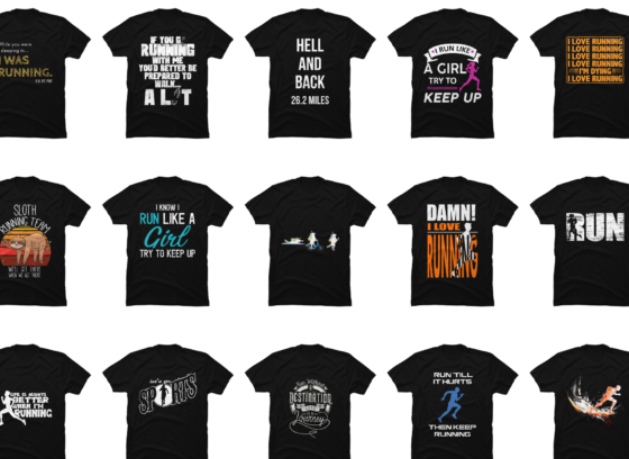
While the market may seem saturated at first glance, there are still plenty of untapped opportunities waiting to be discovered by those willing to delve deeper into niche research.
This article sheds light on some of these unsaturated t-shirt niches, offering insights into how businesses can capitalize on them.
1. Niche Selection and Research
The key to uncovering these hidden gems lies in thorough niche research.
Utilizing tools like e-rank can provide valuable data on search trends and competition levels on platforms like Etsy.
By analyzing the ratio of competition to average searches, businesses can identify niches with lower competition, making them ripe for exploration.
2. Unique Niches to Consider
Some of the less saturated niches identified through research include:
Chestnut and Rosary T-Shirts: These niches offer a blend of nature and spirituality, appealing to specific customer segments looking for meaningful or symbolic apparel.
Location-Based T-Shirts: T-shirts themed around specific locations, like Nara, Japan, or Tahoe, can attract customers interested in travel, geography, or personal connections to these places.
Hobby and Interest T-Shirts: Niches like beekeeping, airbrush art, or bourbon-themed t-shirts cater to individuals passionate about their hobbies or interests, providing a personal touch to their wardrobe.
Animal and Nature T-Shirts: Designs featuring animals like capybaras or themes like microbiology can appeal to nature enthusiasts and those with a keen interest in the natural world.
3. Ensuring Market Viability
Before diving into a niche, it’s crucial to ensure there’s a buying market.
A simple yet effective way to gauge this is by searching the niche on platforms like Etsy and looking for best-selling items.
This not only confirms the demand but also provides insights into the types of designs that resonate with the target audience.
4. Design and Differentiation
Understanding what sells in your chosen niche is vital. Analyzing best-selling designs can reveal trends in fonts, graphics, and styles that appeal to your target market.
Creating designs that align with these trends, yet offer a unique twist, can set your products apart and attract buyers.
While the t-shirt market may seem crowded, there’s a wealth of untapped niches waiting to be explored.
By conducting thorough research, identifying unique niches, validating market demand, and creating distinctive designs, businesses can carve out a successful space in the competitive t-shirt industry.
Embracing these less saturated niches not only offers a pathway to success but also allows businesses to cater to specific customer interests, making their offerings more personal and meaningful.
March 18, 2024
Leveraging Google News for Financial Gain: A Comprehensive Guide
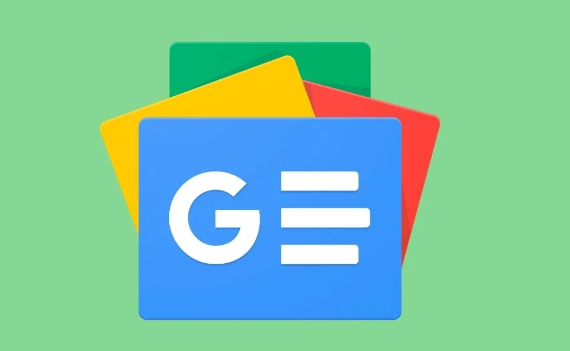
In the digital age, innovative methods for generating income online are constantly emerging.
One such method involves utilizing Google News, a comprehensive news aggregator that compiles articles from various sources across the internet.
This platform offers a unique opportunity for individuals looking to make money online by leveraging the vast array of content available.
Here’s a step-by-step guide on how to capitalize on this opportunity.
Step 1: Explore Google News
Begin by navigating to Google News. This platform is a treasure trove of articles covering a wide range of topics, including world events, local news, business, technology, entertainment, sports, science, and health.
For this method, focus on selecting a category that resonates with you or is currently trending.
The goal is to find compelling and intriguing articles that are likely to attract a wide audience.
Step 2: Select a Compelling Article
Once you’ve chosen a category, sift through the articles to find one that stands out. The article should be engaging, informative, and relevant to a broad audience.
For instance, an article on health tips, technological advancements, or financial advice could have wide appeal.
The success of this method hinges on the article’s ability to captivate readers, as this will directly impact your potential earnings.
Step 3: Repurpose the Content
After selecting an article, the next step involves repurposing the content to create something unique.
This is crucial to avoid plagiarism and copyright infringement. Utilize tools that can help you rewrite the article while maintaining its core message and value.
This process transforms the original article into your own original content, ready for publication.
Step 4: Monetize the Content
The final step is monetizing the repurposed content. There are several strategies to achieve this, but two effective methods stand out.
The first involves creating a platform or leveraging existing ones to publish your articles, generating income through advertising, affiliate marketing, or subscriptions.
The second method involves submitting your articles to platforms that pay per word or article. This can be a lucrative option, especially for longer, well-crafted pieces.
Making money using Google News involves a creative process of selecting, repurposing, and monetizing content.
By following these steps, individuals can tap into the vast reservoir of information available on Google News and transform it into a source of income.
This method not only offers financial benefits but also enhances one’s skills in content creation and digital marketing.
Embracing Spring 2024: A Guide to the Latest Design Trend

As the frost of winter melts away, the vibrant essence of spring breathes new life into the world of design.
This season, the design landscape is blossoming with fresh trends that promise to invigorate your creative projects.
From the canvas of fashion to the digital screens of graphic design, here’s a detailed exploration of the must-know design trends for Spring 2024.
Floral Prints: A Timeless Spring Revival
Floral designs, a perennial favorite, are blooming with a modern twist this spring.
Expect to see a diverse range of floral motifs, from delicate watercolor petals to bold, abstract blooms.
These versatile patterns are making their way onto everything from apparel to home décor, offering a fresh and lively aesthetic that captures the essence of spring renewal.
Pastel Palette: Soft Hues for Soothing Designs
The color story of Spring 2024 is painted in soft, soothing pastels.
Lavender, mint, peach, and baby blue are dominating the design world, bringing a sense of calm and serenity.
These hues work beautifully in minimalist designs, adding a subtle touch of color that’s both elegant and understated.
Nature-Inspired Themes: Celebrating the Great Outdoors
This season, designs are drawing inspiration from the natural world, with a focus on animal motifs and insect patterns.
Expect to see a variety of nature-themed designs, from the intricate details of moth wings to the playful shapes of springtime critters.
These elements add a whimsical touch to designs, perfect for projects that aim to evoke a sense of wonder and exploration.
Sustainability and Comfort: Design with Purpose
Sustainability continues to be a significant theme in design, with an emphasis on eco-friendly materials and practices.
This trend is coupled with a focus on comfort, as designs prioritize well-being and ease of use.
From fashion to product design, expect to see items that not only look good but also feel good and do good for the planet.
Minimalism: Less is More
The minimalist trend persists, with designs embracing clean lines, simple shapes, and a restrained color palette.
This “less is more” approach allows for a focus on functionality and usability, making it a popular choice for digital interfaces and everyday products alike.
Pop Culture and Niche Themes: Personalized Expressions
Pop culture references and niche themes are making a splash in design, offering personalized expressions that resonate with diverse audiences.
From self-care and mental health to body positivity and environmental awareness, designs are becoming more inclusive and reflective of individual values and interests.
In conclusion, Spring 2024 is shaping up to be a season of renewal and creativity in the design world.
By incorporating these trends into your projects, you can stay ahead of the curve and create designs that are not only visually appealing but also meaningful and relevant.
Embrace the spirit of spring and let these trends inspire your next masterpiece.
Revolutionizing T-Shirt Design with AI Automation
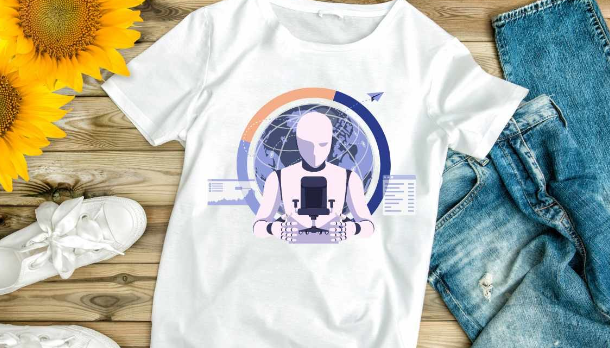
In the rapidly evolving world of fashion and design, AI automation has emerged as a game-changer, particularly in the realm of t-shirt creation.
This innovative approach leverages the power of artificial intelligence to streamline the design process, making it possible to produce unique and appealing t-shirt designs in a fraction of the time it would traditionally take.
The Five-Step Process to AI-Driven T-Shirt Creation
1 Developing a Variation Template: The journey begins with the creation of a variation template, a foundational design that can be easily adapted to various themes or concepts. This template serves as a versatile base, allowing for quick customization and iteration.
2 Generating Slogans with AI: Utilizing AI tools like ChatGPT, designers can rapidly generate a wide array of catchy and relevant slogans tailored to their target audience. This step significantly reduces the time spent brainstorming and refining text elements for the shirts.
3 Crafting Images with AI Art: AI art generators, such as Midjourney, are employed to produce compelling visual elements that complement the slogans. These tools offer the flexibility to create designs that range from simple silhouettes to more complex illustrations, catering to the specific aesthetic of the t-shirt.
4 Editing and Upscaling Artwork: Once the basic elements are in place, the artwork is refined and upscaled to ensure it meets the quality standards required for printing. This involves removing unwanted backgrounds, adjusting colors, and enhancing resolution to achieve a professional-grade design.
5 Assembling the Design: The final step involves bringing all the components together into a cohesive design. Using platforms like Canva, designers can arrange the text and imagery according to their variation template, fine-tuning the layout to perfection.
Optional: Adding a Distressed Look
For those aiming to imbue their designs with a vintage or worn-out aesthetic, an additional step involves applying a distressed texture to the artwork.
This technique adds depth and character to the t-shirt, giving it a unique appeal that sets it apart from more conventional designs.
The Impact of AI on T-Shirt Design
The integration of AI into the t-shirt design process offers numerous advantages.
It not only accelerates the creation of designs but also opens up a world of creative possibilities that might not have been feasible through traditional methods.
Designers can experiment with a vast array of styles, themes, and concepts, effortlessly adapting their templates to tap into different markets or trends.
Moreover, this approach democratizes design, enabling individuals without extensive graphic design skills to bring their creative visions to life.
The intuitive nature of AI tools and platforms makes them accessible to a broader audience, fostering innovation and diversity in the realm of t-shirt design.
In conclusion, AI automation is transforming the landscape of t-shirt design, offering a blend of efficiency, creativity, and accessibility.
As these technologies continue to evolve, we can expect to see even more groundbreaking advancements in how we conceive and produce wearable art.
The Symphony of Innovation: AI’s Role in Music Creation
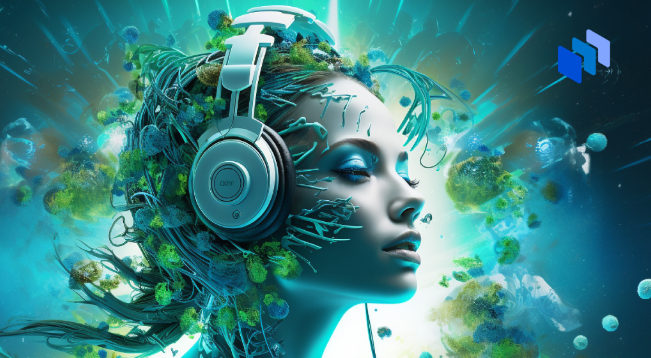
In the ever-evolving landscape of music production, artificial intelligence (AI) has emerged as a groundbreaking force, reshaping the way we conceive, create, and consume music.
The integration of AI in music is not just a novelty but a transformative tool that has opened up new horizons for creativity and expression.
AI-driven platforms have now reached a level of sophistication where they can generate high-quality music compositions with minimal human input.
These systems, like Suno AI, can produce complete songs, from melody to lyrics, in a variety of genres and languages, showcasing their versatility and adaptability.
The process is straightforward and user-friendly, allowing creators to input simple prompts, such as a desired theme or mood, and receive a fully formed musical piece in return.
One of the remarkable aspects of AI in music is its ability to create instrumental tracks.
This feature is particularly beneficial for filmmakers and content creators who require original scores for their projects.
By specifying the type of soundtrack needed, for instance, a score for a Western film, the AI can generate music that not only fits the brief but also enhances the overall narrative and emotional impact of the visual content.
Moreover, AI’s capabilities extend beyond music composition to include the design of album covers and promotional materials.
Advanced AI tools like Ideogram can generate visually appealing and thematically relevant artwork, complete with perfectly integrated text.
This ability to handle both audio and visual elements makes AI an invaluable asset for musicians and bands looking to establish a cohesive and professional brand identity.
The implications of AI in music are profound, offering a democratization of music production.
Artists and creators who may not have access to traditional resources or musical training can now bring their visions to life with the help of AI.
This technology levels the playing field, making music creation more accessible and inclusive.
However, the rise of AI in music also prompts discussions about originality, creativity, and the role of human touch in art.
While AI can produce music that is technically impressive and stylistically diverse, the question of emotional depth and connection remains.
Music, at its core, is an expression of human experience and emotion.
The challenge for AI, then, is not just to mimic these qualities but to evoke genuine feelings and resonate with listeners on a personal level.
As we look to the future, the potential for AI in music is boundless.
With continuous advancements in technology, AI could offer even more personalized and interactive musical experiences, blurring the lines between creator and creation.
The integration of AI in live performances, interactive sound installations, and adaptive music scoring for games and virtual reality are just a few of the possibilities on the horizon.
In conclusion, AI has undoubtedly made its mark on the music industry, offering tools that inspire innovation and creativity.
As we navigate this new era of music production, it is essential to embrace the opportunities AI presents while also reflecting on the value of human artistry and expression.
The symphony of innovation that AI brings to music is just beginning, and its full potential is yet to be discovered.
March 25, 2024
Unveiling the Digital Art Revolution: TV Frame Art

In the realm of digital art and home decor, a new trend is taking the market by storm, offering both artists and entrepreneurs a unique opportunity to tap into an emerging niche.
This innovative concept, known as TV Frame Art, is redefining the way we perceive and utilize our television screens, transforming them into dynamic canvases that blend seamlessly with our home aesthetics.
The Concept of TV Frame Art
TV Frame Art is not your conventional wall art.
It’s a creative fusion of technology and artistry, where digital artworks are designed to be displayed on television screens that double as decorative frames when not in use.
This concept caters to the modern desire for minimalist and multifunctional home decor, allowing a television to serve both as an entertainment device and a piece of art.
The Rising Demand
The popularity of TV Frame Art has been on an upward trajectory, with search trends indicating a growing interest in this unique form of art.
Keywords related to TV Frame Art, such as “Samsung frame art TV” and “Samsung TV art,” have seen breakout increases in searches, signaling a burgeoning market with high consumer interest.
The Market Opportunity on Etsy
Platforms like Etsy have become hotspots for selling TV Frame Art, with some sellers achieving hundreds of monthly sales from a single design.
This indicates a significant market potential for artists and digital creators to explore.
The beauty of TV Frame Art lies in its simplicity and the ease of creation, making it accessible for artists of all skill levels to contribute and profit from this trend.
Creating and Selling TV Frame Art
Creating TV Frame Art involves a blend of creativity and technical know-how, but it’s far from daunting.
With the aid of AI and digital design tools, artists can craft stunning pieces that cater to a wide array of tastes and interior designs.
The process from creation to listing on platforms like Etsy is straightforward, allowing creators to quickly turn their art into a profitable digital product.
The Bottom Line
TV Frame Art represents a frontier in the digital art space, offering a fresh perspective on home decor and digital downloads.
For artists and digital entrepreneurs looking for new avenues to explore, this niche presents a promising opportunity to showcase creativity, meet consumer demand, and generate income.
As the trend continues to grow, the potential for TV Frame Art is boundless, making now the perfect time to dive into this digital art revolution.
AI-Powered PLR Creation for Massive Profit

In the evolving landscape of digital entrepreneurship, leveraging Artificial Intelligence (AI) to create Private Label Rights (PLR) products emerges as a groundbreaking strategy for generating substantial income.
This innovative approach intersects the rapid advancements in AI with the vast and ever-hungry PLR market, heralding a new era in content creation and distribution.
PLR products, encompassing eBooks, courses, and checklists, offer a unique opportunity for creators to sell their work with rights that allow the buyer to rebrand and resell as their own.
Traditionally, producing such high-quality digital assets demanded considerable time and resources, but AI is poised to redefine this dynamic.
Integration of AI in PLR Content Creation
The advent of AI technologies in PLR content creation presents a revolutionary shift.
With AI, creators can now produce a diverse array of digital assets swiftly and efficiently.
This technology not only accelerates the creative process but also ensures the production of high-quality content, catering to the insatiable demand of the PLR market.
This market, a hidden giant, thrives on fresh, valuable resources, presenting a lucrative opportunity for those adept in AI-driven content generation.
Efficiency and Quality
AI redefines efficiency in the realm of PLR content creation. It enables the rapid generation of materials without the extensive labor traditionally involved.
This efficiency is a game-changer, allowing creators to quickly respond to market demands and keep their offerings relevant and up-to-date.
Diverse Monetization Strategies
The PLR landscape is ripe with diverse monetization strategies.
Creators can enrich membership sites with AI-generated courses, or sell eBooks and checklists, among other digital products.
This versatility enables creators to tailor their strategies to fit their business model, whether they seek passive income streams or wish to build a comprehensive digital product portfolio.
In conclusion, the intersection of AI and PLR represents a significant opportunity for digital entrepreneurs.
By harnessing AI, creators can tap into the vast PLR market, producing and monetizing high-quality digital assets with unprecedented efficiency and scale.
The Ultimate Blueprint for Making Money with User-Generated Content (UGC)

Creating engaging and authentic content has never been more valuable in the digital landscape, especially when it comes to user-generated content (UGC).
UGC content creators have emerged as influential figures who bridge the gap between brands and consumers, providing genuine insights and reviews that resonate more strongly with audiences compared to traditional brand advertisements.
User-generated content (UGC) is essentially any form of content—be it text, videos, images, reviews, etc.—created by individuals rather than brands.
This type of content is perceived as more authentic and trustworthy by consumers, as it often reflects real-life experiences with products or services.
The shift towards UGC has been significant, with studies showing that a vast majority of marketers believe consumers trust content created by their peers more than that created by brands themselves.
The process of becoming a UGC content creator is straightforward but requires dedication and strategy.
The first step is to understand the basics of UGC and its importance in today’s marketing ecosystem.
By leveraging platforms like TikTok, Instagram, and YouTube, creators can share their authentic experiences with brands and products.
This authenticity is key, as it aligns with the desire for genuine content among consumers.
Building a portfolio is a critical step for aspiring UGC creators.
This involves creating and curating content that showcases your ability to engage and influence your audience.
A well-crafted portfolio should highlight a variety of content types and styles, demonstrating versatility and the ability to cater to different brands’ aesthetic and messaging requirements.
Negotiating with brands is another crucial aspect of the UGC content creation journey.
Creators should be prepared to discuss content rates, deliverables, and timelines.
Understanding the value of your content and audience is essential in these negotiations, as it ensures fair compensation for your efforts.
In conclusion, becoming a UGC content creator offers a unique opportunity to turn your creativity and passion into a lucrative career.
By focusing on authenticity, building a strong portfolio, and effectively engaging with brands, you can position yourself as a valuable asset in the ever-evolving digital content landscape.
7 Essential ChatGPT Prompt Crafting Skills for Better Writing and Time Management

In the realm of writing and artificial intelligence, mastering the use of ChatGPT can significantly enhance writing quality and save time.
Below are seven effective tips for crafting better prompts in ChatGPT, which can lead to more precise and enriched writing.
Creative Hooks: Struggle with starting articles in an engaging manner? Request ChatGPT to provide various compelling ways to kick off an article that immediately captures the reader’s attention.
Simplified Language: If your writing often feels overly detailed, ask ChatGPT to help condense a specific paragraph, making it concise yet impactful.
Persuasive Tone: To boost your persuasive writing skills, seek guidance from ChatGPT on breaking down the essential elements of persuasive articles and provide an example paragraph that effectively utilizes these elements.
Strong Conclusions: Enhance your ability to craft powerful conclusions that leave a lasting impression on readers. Inquire about strategies or formulas for drafting impactful endings.
Overcoming Creative Block: Writer’s block can be a persistent challenge. Request ChatGPT for prompts or exercises to stimulate creativity and generate fresh content ideas.
Feedback Interpretation: Constructive criticism is vital for improvement, but understanding it can be tricky. ChatGPT can guide you on how to analyze feedback on your writings for effective revisions.
Form Corrections: After reviewing tone and structure, ask ChatGPT to evaluate your use of punctuation and spelling, ensuring your text is polished.
To craft the perfect prompt for ChatGPT, clarity in your objectives is crucial. Specify exactly what information or outcome you seek, avoiding ambiguity.
Direct and specific instructions yield the most accurate responses.
For instance, instead of a broad request about dinosaurs, asking for a summary of the main types and their distinct characteristics would be more effective.
Incorporating any particular detail or requirement into the prompt can further personalize the response, such as specifying a tone or word limit.
Experimenting with different prompts will enhance your understanding of how ChatGPT interprets instructions, allowing for refined interactions over time.
Through patience and practice, anyone can master the art of generating effective prompts, unlocking the full potential of artificial intelligence in writing tasks.
Final Edition
A New Champion in AI: Claude 3 Overtakes GPT-4
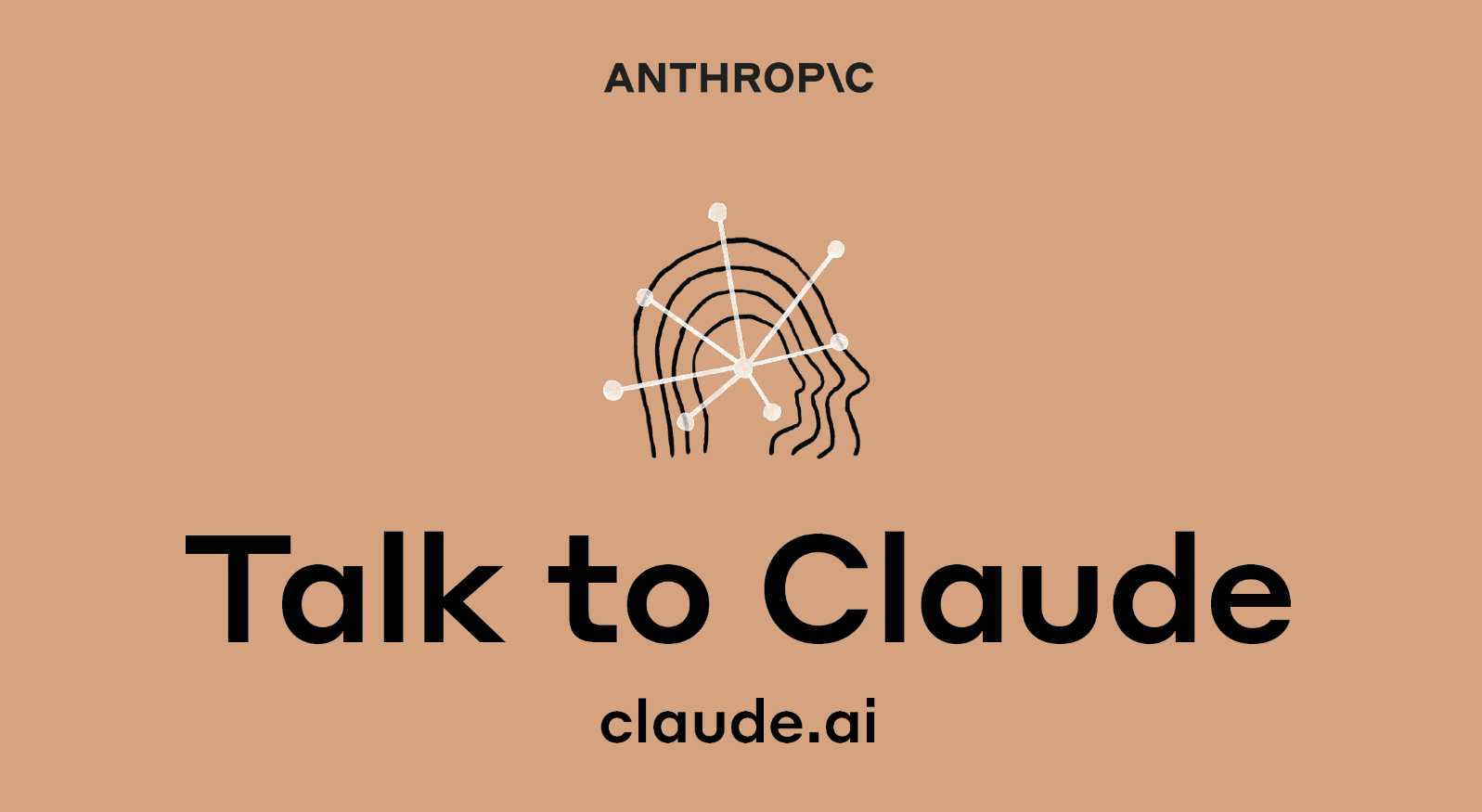
In a surprising turn of events, Claude 3, developed by Anthropic, has surpassed OpenAI’s GPT-4, marking a significant milestone in the competitive world of AI chatbots.
This achievement was highlighted in the Chatbot Arena, a platform that ranks AI models based on crowd-sourced evaluations.
For over a year, GPT-4 dominated the leaderboard, but Claude 3’s rise signals a shift, emphasizing the importance of variety and competition in the AI industry.
Experts see this as a healthy sign, encouraging diversity among top AI models.
The success of Claude 3, along with other models like Haiku, showcases the evolving landscape of AI, where new models are gradually making their mark and challenging established giants like OpenAI.
Key Insights:
Diversity in AI Development: The emergence of Claude 3 as a frontrunner underscores the benefits of having multiple strong players in the AI field.
This diversity fosters innovation and prevents monopolies, ensuring that AI development remains dynamic and varied.
The Importance of User Experience: The rankings in Chatbot Arena are based on user preferences, highlighting that the effectiveness of an AI model is not just about raw computational power or data processing capabilities but also about the subjective user experience it provides.
Future of AI Competition: With Claude 3’s rise, the AI industry is reminded that no single model or company will dominate indefinitely.
Continuous improvement and innovation are crucial as newer models like Claude 3 and potentially GPT-5 enter the arena, promising more exciting developments in AI.
Continuing the AI Evolution
The entry of Claude 3 into the spotlight signifies a shift towards a more diversified field where various models contribute to the richness and versatility of AI applications.
This development serves as a reminder that the journey of AI is an ongoing one, with each new model paving the way for the next wave of advancements.
As we look forward to what the future holds, it’s clear that the AI community will continue to witness exciting developments, pushing the boundaries of what’s possible with artificial intelligence.
The presence of Claude 3 at the top of the leaderboard in Chatbot Arena is not just a victory for Anthropic; it’s a win for the AI community as a whole.
It encourages other developers and companies to strive for excellence, ensuring that the AI landscape remains vibrant and competitive.
As new models like Claude 3 challenge the status quo, they inspire a culture of continual improvement and innovation, promising a future where AI can achieve even greater feats.
OpenAI’s Next Leap: Enhancing GPT-4 and DALL-E 3 with User-Focused Features

OpenAI, a pioneering tech firm, is gearing up to introduce a series of exciting updates for its artificial intelligence models, GPT-4 and DALL-E 3.
These updates promise to enhance user interaction and broaden the capabilities of these AI models.
For GPT-4, OpenAI is considering removing the existing message limit, which currently restricts users to 40 messages every three hours.
A new feature, dubbed the “Model Tuner Selector,” is also in the pipeline.
This tool aims to optimize efficiency by determining whether to process user requests with GPT-4 or the slightly older GPT-3.5 model, depending on the complexity of the request.
This not only saves processing time but also helps users conserve their GPT-4 usage quota.
Moreover, OpenAI is exploring an “Upgraded Response” function, enabling users to enhance replies from GPT-3.5 to GPT-4 at the click of a button, potentially driving more users towards the subscription-based version of the service.
In a move towards making AI more accessible, OpenAI may introduce an option for anonymous use of ChatGPT.
This feature would allow individuals to use the chatbot without the need for account creation, thereby lowering the entry barrier while still encouraging account registration for a personalized experience including chat history saving and sharing capabilities.
DALL-E 3, known for generating highly detailed and creative images from textual descriptions, is slated to receive a significant update that includes an image editor with inpainting functionality.
This feature will allow users to select specific areas of an image for modification using descriptive text, offering greater creative control.
OpenAI is also working on a redesign that would place the chat dialogue to the side, keeping the focus on the image and editor, thereby enhancing the user experience.
While these updates signal OpenAI’s commitment to staying at the forefront of AI technology, it’s important to note that the features are still under testing and have not been officially announced.
This step forward reflects the company’s ongoing efforts to refine its AI models, ensuring they remain competitive and meet the evolving needs of users.
Elon Musk to Expand Access to AI Chatbot Grok for All Premium Subscribers on X in a Strategic Move
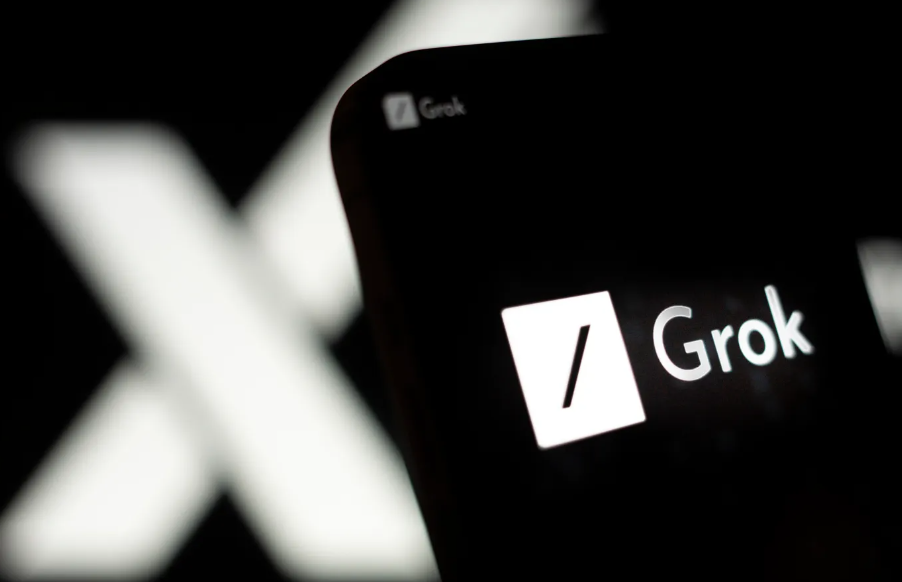
Elon Musk has announced that all premium subscribers of the platform formerly known as Twitter, now called X, will soon have access to an AI chatbot named Grok.
This decision comes after xAI, a venture by Musk, decided to make Grok’s technology open to the public earlier in March.
Until now, Grok was exclusive to Premium+ subscribers, who paid more for their subscription.
By making Grok available to all premium users, Musk is possibly aiming to enhance the appeal of X and compete with other popular chatbots like ChatGPT and Claude.
This strategic move might also be an effort to increase subscriber numbers at a time when X is witnessing a decline in user engagement.
Recent data suggests a significant drop in platform usage and a struggle to keep users interested.
Furthermore, X’s advertising revenue might be under threat, as a substantial number of top advertisers have pulled back their spending on the platform.
Grok is designed to interact on a range of topics, including those typically avoided by other AI chatbots, such as controversial political ideas and conspiracy theories.
It also offers real-time data from X, providing an edge over its competitors.
However, the declining user base under Musk’s leadership raises questions about the long-term value of this data.
Premium subscriptions for X start at $8 monthly or $84 annually, with Grok previously limited to the more expensive Premium+ tier.
By introducing Grok to a wider audience, Musk is not only attempting to make X more competitive but also trying to retain users tempted by other platforms like Mastodon, Bluesky, or Instagram’s Threads, which have gained significant popularity.
The implementation of Grok for all premium subscribers is expected to happen later this week, marking a new phase in X’s strategy to leverage AI for enhancing user engagement and platform attractiveness.
Unleashing the Potential of AI Agents: A Simple Guide to the Future of Artificial Intelligence

In a world rapidly advancing with technology, the concept of AI agents is becoming a beacon for the future of artificial intelligence.
Imagine having a personal assistant that not just listens and responds but also thinks, plans, and learns from its experiences.
This is the promise of AI agents, as highlighted by AI experts like Dr. Andrew Ng, who is at the forefront of this exciting development.
What are AI Agents?
AI agents are like supercharged virtual assistants that can do much more than set your alarm or play your favorite song.
They are designed to understand complex requests, conduct research, make decisions, and even learn from their outcomes to perform tasks more efficiently in the future.
Think of an AI agent as a digital colleague that’s always learning and improving.
Why Are They So Important?
The importance of AI agents lies in their ability to perform iterative tasks, which means they can refine and improve their work based on feedback, much like how humans improve through practice and reflection.
For example, if an AI agent writes an essay, it can review its work, decide what needs to be better, and revise it accordingly.
This ability to “think” and improve makes AI agents incredibly powerful tools for a wide range of applications, from writing and designing to problem-solving and data analysis.
The Future is Agentic
The future that Dr. Andrew Ng envisions with AI agents is one where these digital helpers become integral to our daily lives, both in personal and professional settings.
They could manage our schedules, help us make better decisions by providing researched insights, and even assist in creative processes like writing or design.
In the workplace, AI agents could transform industries by automating complex tasks, analyzing large sets of data to uncover insights, and facilitating innovation by providing a new way to approach problem-solving.
Their ability to work iteratively and improve over time means they could take on tasks that are currently too complex or time-consuming for humans or traditional AI systems.
A World Enhanced by AI Agents
The development of AI agents represents a significant leap forward in our journey with technology.
By harnessing the power of advanced AI, these agents have the potential to enhance our productivity, creativity, and decision-making processes.
They offer a glimpse into a future where technology and humanity collaborate more closely, with AI agents serving as companions and tools that help us reach our full potential.
In summary, AI agents are not just the next step in the evolution of artificial intelligence but a paradigm shift towards more autonomous, intelligent systems that can learn, adapt, and improve.
As we stand on the brink of this exciting frontier, the possibilities seem limitless, with AI agents poised to redefine our relationship with technology and propel us into a future filled with promise and potential.
